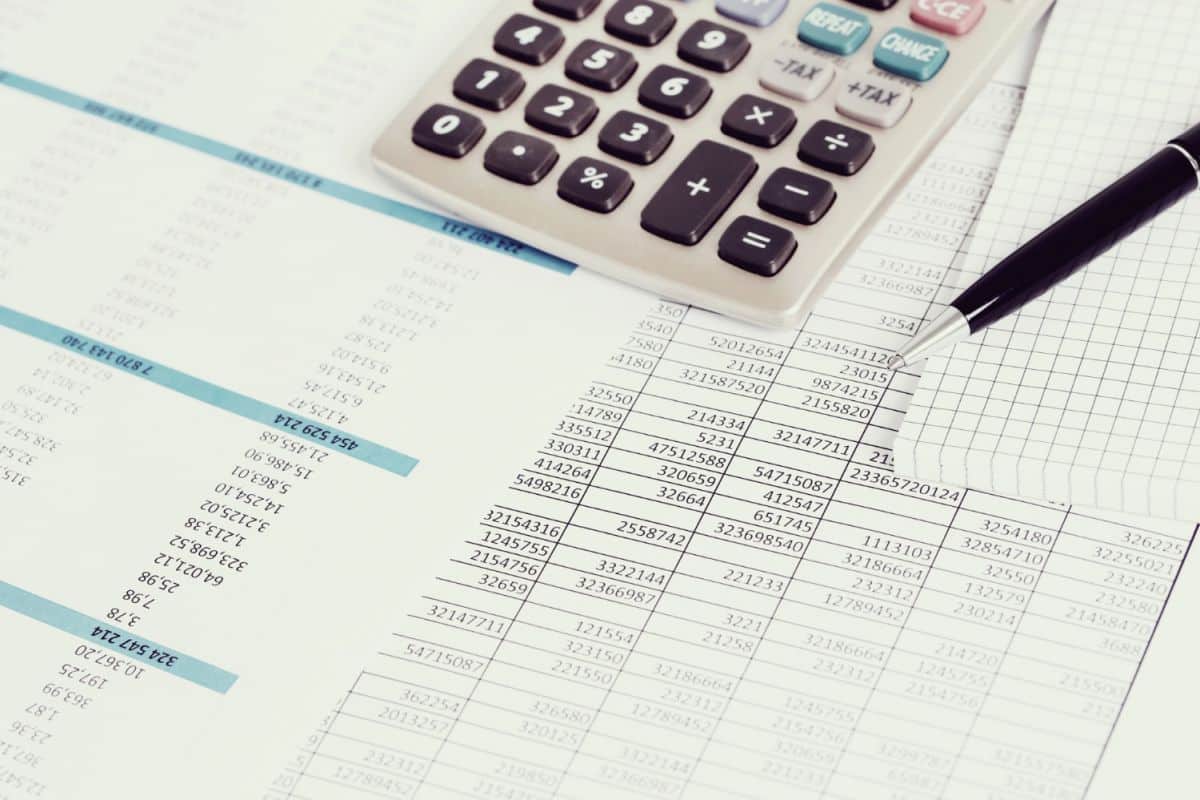Tax Planning Tips
Are you getting ready to file your income tax return? If that’s the case, you’re undoubtedly looking for advice on how to reduce the amount of money you owe in taxes. You are in luck because there are a few things you can do to bring down the amount of money you owe in taxes and save some cash. In this article, we’ll go over some of the most useful tax planning ideas that will help you get the largest return that the law allows you to receive.
As we move quickly toward the end of the year, now is the time to begin formulating a game plan for how your taxes will be handled. Here are a few pointers that might assist you in lowering the amount of money that you owe in taxes, despite the fact that there are numerous things to take into consideration.
Are you looking for strategies to lower the amount of money you owe in taxes this year? If this is the case, you are in luck! In today’s article, we will give you some advice on how to effectively plan for your upcoming tax obligations. By following these guidelines, you can reduce the amount of money you owe in taxes and keep more of the money you’ve worked so hard to earn.
First and foremost, make it a point to claim all of the tax deductions and credits to which you are entitled. The second piece of advice is to maintain an accurate record of your expenditures by keeping a journal or spreadsheet. Finally, you should have a conversation with a tax expert to ensure that you are making the most of all of the most recent tax benefits. If you follow these suggestions, you will be able to lower your tax liability and keep more money for yourself.
Tax Planning Tips
If you have tax-deductible expenses, such as those for repairs and maintenance on investment properties, you should make every effort to move them forward so that you can take advantage of the tax deductions they provide within the current fiscal year.
You will be able to carry forward expenses if you prepay the interest on your investment loans or margin loans for a period of 12 months. If you prepay the interest on a loan for $300,000 for a year, it could cost you $15,000. However, if you itemize your deductions, you could receive a tax refund of up to $7,000. Because the lender will only deduct one month’s interest and credit the remaining amount toward the principal if you simply bank the equivalent of a year’s worth of interest into the loan account, this strategy will require negotiation with your lender. You cannot simply bank the equivalent of a year’s worth of interest into the loan account.
Remember that the date of the sales contract’s signing is the one that matters for purposes of calculating the tax on capital gains. Because of this, simply postponing the signing of a contract until after the 30th of June can alter a scenario such that the CGT is paid at a time when the taxpayer is in a lower tax band. In addition to this, it allows you to spend the money that you owe the tax collector for an additional year.
Another method is to sell assets in the same year that you generate a capital profit that would result in a capital loss. If the losses are large enough, they can be offset against the profits, which will result in a reduction of the capital gains tax. Bear in mind that despite the fact that capital losses can be carried forward, capital earnings cannot be carried forward. Therefore, the opportunity to minimize capital profit before the 30th of June will be lost if you do not take steps to do so before that date.
Anyone who is qualified to make a contribution to a superannuation fund is also able to minimize their CGT by making a contribution that is tax-deductible in order to offset the capital gain.
Case Study
An individual has a yearly income of $50,000, which includes employer-provided benefits of $5,000. They decide to sell their investment, which results in a capital gain of $40,000. After taking into account the discount of fifty percent, this amount will be reduced to twenty thousand dollars (USD), and the capital gains tax will be computed by adding twenty thousand dollars to the person’s taxable income. They may make a concessional contribution to their retirement account in the amount of $20,000, which would result in a tax reduction in the same amount. This would eliminate the capital gain. Only fifteen percent of the concessional payment is subject to taxation.
If you are trying to reduce a larger capital gain in 2019/2020, be aware that the superannuation carry-forward rules are now in effect. It may be worthwhile to save some of this year’s superannuation contribution in case you need it next year. If you are trying to reduce a capital gain in 2019/2020, be aware that the superannuation carry-forward rules are now in effect. Catch-up contributions are now being accepted as of the first of July in 2019. You have the ability to bring forward any of your own unused contributions from the 2018/2019 year into the 2019/2020 year if your superannuation balance at the end of the financial year (30 June 2019) is less than $500,000 and you did not use up your entire $25,000 concessions cap (including employer contributions) in the previous financial year (2018/2019).
For instance, if your employer contributes $5000 annually, you may be eligible to make total additional concessional contributions of $40,000 in the next financial year and claim a tax deduction for those contributions if you have not made any personal concessional contributions in the year prior to the year in which you are making the catch-up contribution. This is provided that you have not made any personal concessional contributions in the year prior to the year in which you are making the catch-up contribution.
When it comes to tax planning, these strategies will help you sleep better this year.
If we lived in a perfect world, dealing with taxes would take up a very little portion of our time and mental energy. Taxes, on the other hand, have the ability to keep business owners up at night worrying about them. Due to the fact that income tax is typically one of the highest expenses incurred by organizations and individuals alike, proper preparation, budgeting, and oversight are all essential.
Thankfully, it is feasible to manage your taxes and gain control over the impact they have on your money via proper planning and organization. You will be able to reclaim control of your cash flow, loan repayments, and any other responsibilities after you have a complete understanding of and plan for your taxes.
Plan Your Financial Transactions and Flows
The majority of businesses go through periods of positive and negative cash flow as a result of activities such as buying goods and equipment, paying personnel, and collecting payments. In addition, substantial tax obligations might divert cash flow, putting an unreasonable amount of strain on the financial situations of both enterprises and households.
You may smooth out the roller coaster and focus on other important areas of your business if you plan out your cash flow and anticipate when your tax deadlines will be.
Make a schedule of the payment dates
If you miss the deadline for paying your taxes, you could face substantial penalties such as fines and a strain on your ability to make payments. Be prompt in making your tax payments by properly planning for them so that you can avoid incurring any additional costs.
Your worry will be reduced, and you will be in a better position to achieve consistent achievement if you plan out your tax payments in advance and create a budget to cover them well in advance.
Cover Your Obligations Regarding Superannuation
Consider using superannuation as a tax strategy if you need an additional deduction to bring down your tax liability and are interested in doing so.
If you pay off your superannuation obligations early, you can get a discount for the previous year’s taxes. The enhanced budgetary and cash-flow flexibility that can result from early deduction planning is a significant benefit.
Bring forward some of the other costs
This method of tax planning is comparable to the method of paying off superannuation obligations. When you bring forward other expenses, you are able to claim the deduction for this year, and as a result, your immediate tax liabilities are decreased.
Increase the amount of money you put into your retirement account
You can improve your retirement savings while simultaneously lowering the amount of tax you owe. This is a situation in which everyone involved comes out ahead. You are able to accomplish this goal by contributing more money to your superannuation account at your employer.
There are a lot of people who discover that they can easily readjust their spending habits such that they can afford to make more payments to their retirement accounts. After a while, you don’t miss the additional money, but you do like seeing your retirement account balance grow at a faster rate.
Vary Down Instalments
Another tax method that you might have not utilized in the past is presented here. You can prevent the situation in which you overspend your income taxes and then have to wait until your return is submitted to receive the cashback by varying your instalment payments. If you have some extra cash on hand right now, you can use it toward paying off some of your other expenses or toward reducing the total amount of money you owe.
This technique will help you to balance out your cash flow and regain control over the money that was taken from you for most of the year. It will also allow you to take advantage of any opportunities that may arise.
Cancel the Bad Debts You Owe
Claiming a tax deduction for bad debts and claiming a GST repayment are two ways for businesses to lower the amount of taxes that they owe. To be able to claim the amount as a deduction, you will need to nonetheless write off the amount of the bad debt before the end of the Financial Year.
In order to be eligible for a deduction for bad debts, you need to be able to present evidence that the debt in question is unrecoverable and that it was included in income that was taxable. In order to prove that you took the necessary steps to collect the debt, you will need to preserve records of those steps.
Maintain Accurate and Current Records
One piece of advice that is absolutely necessary for tax preparation is to ensure that all of your financial records are kept up to date. Your records ought to contain every piece of information, such as invoices, records of spending and deductions, statements from assets and banks, and so on.
You won’t want to put this off for much longer if you haven’t already started taking the necessary steps to do so. You have until approximately the end of October to complete the records you need to give to your accountant.
Be aware of the deductions you are eligible to take
Even though the accountants are up to date on the tax deductions that are available for the 2021 End Of Financial Year, the only way for them to incorporate applicable deductions is if you provide documentation to substantiate such deductions. As a result, you have to be aware of what you can claim and retain receipts for any and all deductions that you are eligible to claim.
Make use of the Instant Asset Write-Off that is available.
With the help of the instant asset write-off concession, small enterprises that have combined annual revenue of less than $500 million are able to immediately claim a deduction for assets that are worth less than $150 000.
This discount is available for both brand-new and previously owned assets, and it can be used for more than one purchase.
On the website of the ATO, you can get more information about this topic.
Bring ahead Expenses/Spending
If you have bills that are due in July or August, bringing payments forward to the current Financial Year is a fantastic technique for lowering the taxes that you will owe for this year. You can lower the amount of income that is subject to taxation by paying for expenses in advance and making payments before the 30th of June 2021.
Also, if your company need new machinery or transportation, you should buy it this month or the next, preferably before the 30th of June 2021, so that you can take advantage of tax benefits for the current fiscal year.
As was said above, you can limit the amount of revenue that is subject to taxation in 2021 by deferring the payment of big invoices until July 1, 2021. If you do your accounting using accruals, you will be able to postpone the payment of tax on that invoice until the end of the fiscal year in 2021.
Tax Planning Tips

In spite of the fact that the last year has presented obstacles to any form of planning, the approaching tax season is still a given for any firm. As we draw closer to the fourth and final quarter of the fiscal year, now is the perfect time to review the various opportunities for tax preparation and to think about the ways in which you might be able to profit.
Planning for taxes needs to be an essential part of the actions you engage in to operate your firm.
During the course of the previous year, numerous companies made the decision to conduct an internal assessment of their business practices. This has enabled many business owners to build stronger companies that are also more profitable and run more efficiently. Suppose you aren’t already making use of tax planning opportunities. In that scenario, there is yet another important technique that can assist you in making the most of the provisions provided by the ATO in order to reduce the negative effects of taxation while simultaneously capitalizing on other business prospects.
Now is the moment to take action because some solutions require some amount of time to implement, and after the calendar turns over to June 30th, your available alternatives will be significantly reduced. Your commitments will be established, and you won’t have much of an option other than to pay whatever tax is necessary in order to fulfil your commitments.
This year, one of the things to take into account is how the government has improved its depreciation policies. The instant asset write-off has had its deadline extended to the 30th of June in 2022, and its thresholds and eligibility requirements have been greatly expanded. The threshold amount for each asset is now $150,000 (up from $30,000), and it applies to enterprises with an aggregated turnover of less than $500 million (up from $50 million). Previously, this level applied only to businesses with a turnover of less than $50 million.
If your company has been taking advantage of small business pool deductions, you may also stand to benefit from the new measures, even if you haven’t acquired any new assets. This is because small business pools are eligible for deductions. The small business pool deduction rule is a shrewd approach that provides company owners with the opportunity to depreciate the value of their assets at a quicker pace. A deduction for the entire remaining amount of the small company pool is now available to qualifying enterprises under the new regulations, which are in effect from 6 October 2020 until 30 June 2022.
If you are aware of these regulations and requirements, it is possible that you may be able to take advantage of other opportunities, such as bringing forward capital purchases that would either improve output or produce greater levels of efficiency.
The following are some more suggestions that must be incorporated into your tax plan for the year 2021:
- If you want to take a tax deduction for bad debts, you need to write them off before June 30.
- Maintain records of any accrued employee entitlements (deductible when incurred rather than when paid).
- Make sure you pay your super contributions before the end of the fiscal year so that they can be deducted.
Increase your personal voluntary payments to superannuation (which are tax-deductible up to $25,000 per year). - You should think about postponing the recognition of accrued income to the following fiscal year.
- Paying for some expenses in advance and claiming a deduction for them this year is an option for enterprises with group turnovers of less than $10 million. This option is available for up to 12 months of the following year.
- Make a declaration of dividends and settle any loans to shareholders or directors.
- Make resolutions on the distribution of income by the trustees by the 30th of June (earlier if required by trust deed).
- Examine your responsibilities regarding compliance and reporting, including the following:
- motor vehicle maintenance records;
- Single-Touch Payroll, with annual finalization and reconciliations, included;
- Report on Taxable Payments Made During the Year (TPAR);
- JobKeeper’s reporting requirements and responsibilities.
Reviewing your company’s organizational structure should also be part of an efficient tax plan in order to ensure that you are obtaining the most favourable tax results possible. This should take into consideration a variety of aspects, including tax effectiveness, governance, asset protection, adaptability to change, and ease of administration. If you believe that your company could profit from a business structure that is more suitable, we can offer you advice on how to reorganize your company in a way that would maximize the benefits that are open to you. This might include the CGT reductions that are currently available to small businesses.
Important Methods for Planning Taxes
The rules governing depreciation have been modified by the government to make it possible for companies with a turnover of less than $5 billion to immediately write off the full cost of eligible assets acquired from 7.30 pm on October 6, 2020, and first used by 30 June 2022, with no threshold limit on the cost of the asset. This change in the rules came into effect on October 6, 2020. In addition, second-hand assets can be written off immediately by small and medium-sized firms with annual revenue of less than $50 million. These businesses are eligible for this benefit.
Businesses with a turnover of less than $500 million that choose to use the simplified depreciation rules (Instant Asset Write-Off and Small Business Pooling) do not have the option to opt out of full expensing rules on an asset-by-asset basis; instead, they can choose to opt-up of the rules entirely for all assets. This is the only option available to these businesses.
A company is regarded to be in the category of small business if its annual grouped revenue is less than $10 million. Tax advantages offered to Small Businesses include:
- Deduction made right away for any pre-paid expenses, provided that the amount paid covers a period of less than a year;
- Deductions are available right away for a variety of expenses made in connection with the launch of a new enterprise;
- Simplified rules for trading shares (which will be available for medium-sized enterprises beginning on July 1, 2021);
- A tax offset for small businesses of up to $1,000 for people, with the amount being equal to 8% of the tax that would otherwise be owed on the net income of any small business with a turnover of less than $5 million;
- a rollover that allows changes to corporate structures to be made tax-free.
Please take note that the eligibility for Small Business CGT concessions is not included; as a result, the previous turnover criterion of $2 million or the $6 million net asset test still apply. This is because the eligibility for these concessions is not included.
The minimum annual revenue requirement for a company to qualify as a Small Business Entity (SBE) will rise from $10 million to $50 million. This enables companies whose combined annual sales are less than $50 million to qualify for the tax breaks available to small enterprises, which are detailed below.
These concessions will be handed out in stages as follows:
- These enterprises will be able to immediately deduct certain start-up and prepaid expenses beginning on the first of July in the year 2020;
- These companies will be able to take advantage of the streamlined trading stock rules as of the first of July in 2021.


















